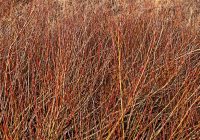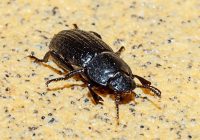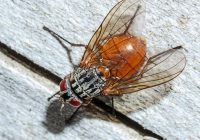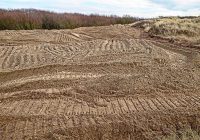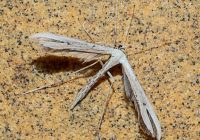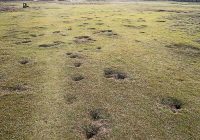Dr Phil Smith’s Wildlife Notes
February 2023
In contrast to last February’s three named storms in a week, this month was dominated by persistent high atmospheric pressure. As a result, there was measureable rain in Formby on only three days. The Met Office tells us it was the driest February in England since 1993, some places registering only 1.6 mm since 15th January. Most UK rivers are running well below normal levels, meaning less water for agriculture, water-supply and nature. Whatever happed to the old saying “February fill dyke, be it black or be it white”? Conversations are already being had on the need to save water but not, of course, by government or TV weather presenters!
On 3rd, I headed for Ainsdale Local Nature Reserve to see how the cattle were doing. I couldn’t find them but the evidence of their presence was everywhere. Because of the low water-level, the slacks were mostly dry, allowing the stock to get in and graze the vegetation. I was pleased to see that two big bushes of the rare Don’s Willow, with their bright-red stems, were doing well. A wintering Chiffchaff gave its distinctive “sweeoo” call from a Hawthorn bush. Two days later, Gary Hedges from the Tanyptera Project at Liverpool Museum joined me at Ravenmeols to check out a possible route for recording visits by invertebrate experts in the summer. Of course, we had to visit the spectacular Devil’s Hole, where Gary spotted two black beetles on bare sand that were new to me. My reference books identified them as Phylan gibbus, a member of the darkling beetle family that is a sand-dune specialist largely confined to the coasts of England and Wales.
A walk down Wicks Path at Formby Point on a sunny afternoon was accompanied by A Mistle Thrush going full blast, while a Robin was also in full song, very different from the plaintive, subdued version in autumn. The south-facing fence produced a few insects as usual, including the widespread and fairly common Spotted Meliscaeva, a hoverfly known to fly on mild winter days. The slope towards Wicks Lake had great drifts of Common Snowdrops, while a Great Spotted Woodpecker called from nearby trees. Despite the ongoing drought, the lake had just enough water to support 25 Mallard and a pair of Greylag geese. Dunes west of the lake are unusual, these days, in being heavily Rabbit grazed. The short turf is rich in dune annuals but they were not yet in flower, though I did spot the tiny white flowers of Common Whitlowgrass a few days later. The same fence now supported three species of hoverfly: Hairy-eyed Syrphus, Marmalade and Spotted Meliscaeva. I also photographed a member of the housefly family with a striking yellow abdomen: possibly Phaonia subventa a common member of this large group. Photos of two ‘micro’ moths found during ‘Buckthorn Bashes’ were referred to Richard Walker, who identified them as Common Plume and Red-letter Flat-body, both species that can be seen throughout the year.
Another early songster is Cetti’s Warbler, though it can be heard throughout the winter. I recognised its explosive outbursts at the RSPB Hesketh Road viewing platform and on Birkdale Green Beach. I checked the colony of Green Snowdrop that I first recorded in 2007 near to Hesketh Road. It was still there but overwhelmed by dense growths of Ivy, one of an increasing number of invasive native plants. An hour at the watch-point overlooking Crossens Marsh proved rather quiet, though a distant view of a male Hen Harrier made it worthwhile. The reclaimed part of Marshside Nature Reserve was still partially flooded, attracting an impressive flock of about 3500 Lapwings. Ringing recoveries show that these winter immigrants come from a wide area of western and central Europe. However, numbers on the Ribble have been in slow decline since about 1990.
During a visit to Freshfield Dune Heath Nature Reserve on 18th, I was encouraged to see recent work by volunteers to take out birch that was invading the heathland. Areas cleared of Gorse last winter are already partially vegetated, though there is evidence of soil enrichment because Gorse fixes nitrogen from the atmosphere. It should reduce over time as the nutrient is washed out of the sandy soil by rainfall.
On 21st, Trevor Davenport joined me to check out the Snowdrops in Cabin Hill Wood. As usual, they put on a magnificent display but all appeared to be the common Galanthus nivalis. We were led a merry dance by a large insect that appeared to have an orange thorax. Only when Trevor potted it did we discover it was just a Dronefly covered in Snowdrop pollen. The large fields east of the National Nature Reserve produced single Fieldfare, Mistle Thrush, Buzzard and Sparrowhawk, several Stock Doves and 28 Curlew. The evocative calls of the latter reminded me of a radio nature programme in the 1940s/50s that was introduced by the song of the Curlew recorded by the famous Ludwig Koch.
The contractors of the national Dynamic Dunescapes project continued to rid the dunes of invasive Japanese Rose by digging it up with machines and burying it 2 m down. They finished off work along the Green Beach that I described in the December notes; then tackled enormous patches of Rose on the old beach-cleanings tip in the Birkdale frontal dunes about 1 km north of Sands Lake. Finally, they cleared a large patch west of the Lake – a magnificent effort. One effect has been to create an enormous area of bare sand that should benefit our sand-dune flora and fauna.
I have to end these notes with the sad news that one of the Lancashire Wildlife Trust’s English Longhorns on Birkdale Local Nature Reserve was found dead on 9th February, having suffered injuries consistent with being chased by a dog or dogs. I feel particularly upset because I have been watching the same group of these beautiful creatures at Cabin Hill NNR since October.

